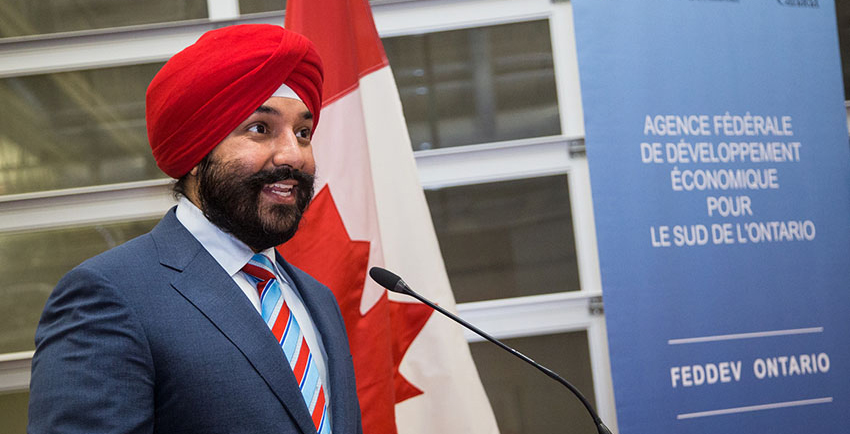
Innovation Minister Navdeep Bains has outlined how the government plans to reduce the cost of ‘mid-range’ wireless services by 25 percent within two years.
Bains outlined the parameters for the 25 percent reduction, and noted that the Big Three (Bell, Telus, and Rogers and their flanker brands) will be expected to lower the prices for their ‘mid-range’ cellphone plans that offer 2GB to 6GB of data.
“We understand that mobile wireless services are essential, and that it’s a must have. We’re focused on making sure that people that need it for school and work have access to good quality networks at lower price points,” Minister Bains told MobileSyrup.
To increase transparency, the government says that it has established a clear benchmark for the progression of the 25 percent reduction.
The benchmark is the price to which the 25 percent reduction will apply. It is based on prices advertised on carriers’ websites in early 2020 for post-paid, BYOD, unlimited talk and text plans in the 2GB to 6GB range. MobileSyrup obtained a document from the government outlining the benchmarks for the different plans.
The document says that the benchmark for the 2GB plan is $50, and with the 25 percent reduction, it would bring the price down to $37.50 per month. The government says this would save a family of four $12.50 a month, $150 per year and up to $600 overall.
Next, the benchmark for a 4GB plan is $55 , and would come down to $41.25 after the reduction. This would save a family of four $13.75 a month, $165 a year, and up to $660 overall.
Lastly, the government says that the benchmark for a 6GB plan is $60 and that after the reduction, it would come down to $45 per month. This translates a a family of four saving $15 in a month, $180 a year and up to $720 overall.
Bains told MobileSyrup that the government will publish a quarterly report detailing the large carriers, and their specific mid-range plans that will outline where the price point was at the start of the quarter.
“Canadians will judge for themselves which companies are honouring that 25 percent commitment through the reports that are going to be published based on the data that is collected,” he explained.
Bains outlined that if these targets are not met within two years, the government will take action with other regulatory tools to further increase competition and help reduce prices.
“If the companies are unable to get that 25 percent target, we will look at additional regulatory measures. For instance, we will consider how we deploy spectrum or how we asses the roll-out of MVNOs, to drive more competition and in turn reduce prices,” he said.
As part of his March 5th announcement, Bains also highlighted the release of the government-issued 2019 Price Comparison Study.
The study revealed that average prices from regional providers were up to 45 percent lower than plans provided by the Big Three. The government says that although this progress is promising, the prices for mid-range plans have not moved, hence the push to lower their prices.
Policies set ahead of 3500MHz auction to encourage competition
The government also revealed that the highly anticipated 3500MHz spectrum auction is scheduled to begin on December 15th of this year.
Bains outlined that to promote greater regional competition and lower prices, 50MHz will be reserved for small and regional telecom companies in markets where enough spectrum is available.
The government says that this will encourage more competition in the wireless market and ensure that smaller and regional carriers are on a more equal footing with the Big Three.
Senior officials at Innovation Science and Economic Development Canada noted that for the spectrum auction this year, the country is being split up into 172 geographic areas. During the previous 600Mhz auction, the country was only divided into 16 geographic areas.
This is an attempt to make it easier to ensure that connectivity reaches rural areas. Further, 138 of these geographic areas are going to have the full 50MHz put aside for them.
In some areas, there will not be any spectrum set aside because of the limited amount of spectrum available due to the presence of existing service providers.
The government has done this in the past, as pro-competitive auction rules have allowed regional providers to more than double their share of low-band spectrum. The government says that this created more competition in the wireless market and lowered prices.
It’s important to note that the 3500MHz bands are considered one of the key spectrum bands for 5G technology. The spectrum is going to support high speeds, increased data usage and new applications.
MobileSyrup may earn a commission from purchases made via our links, which helps fund the journalism we provide free on our website. These links do not influence our editorial content. Support us here.


